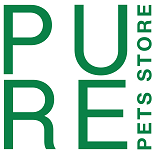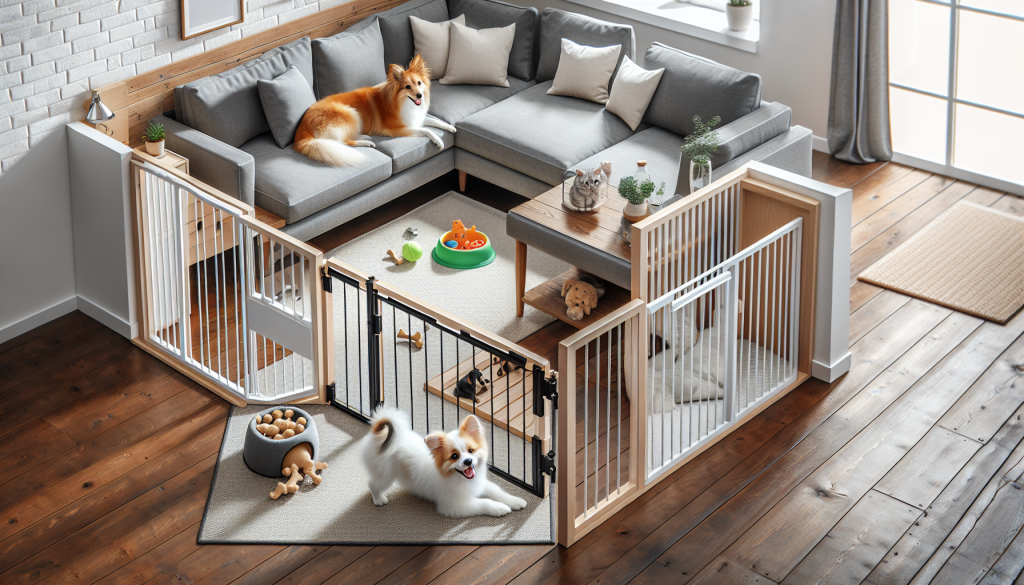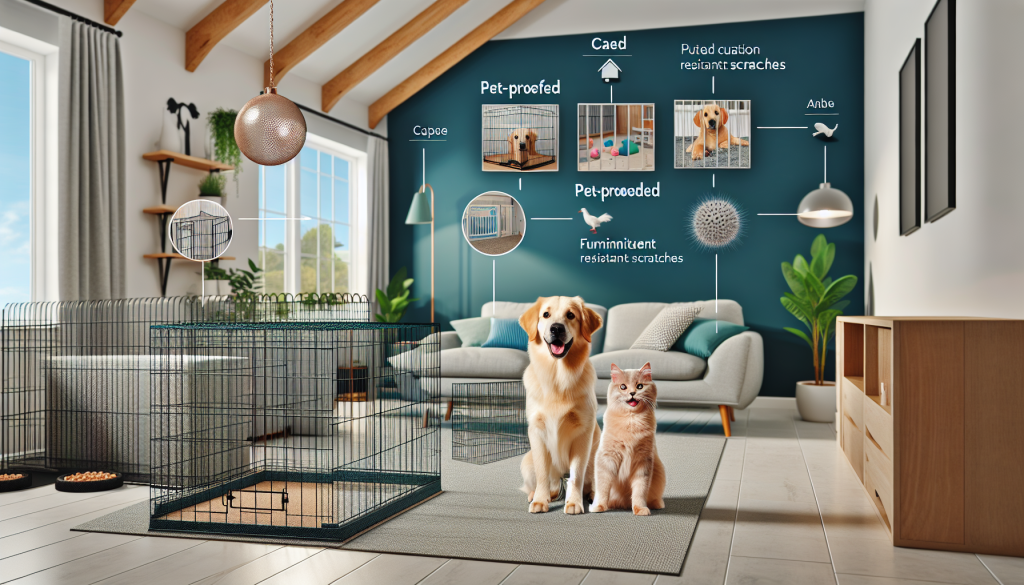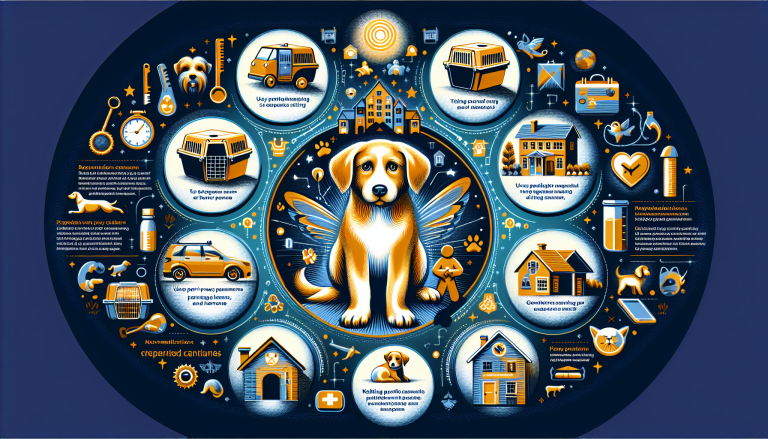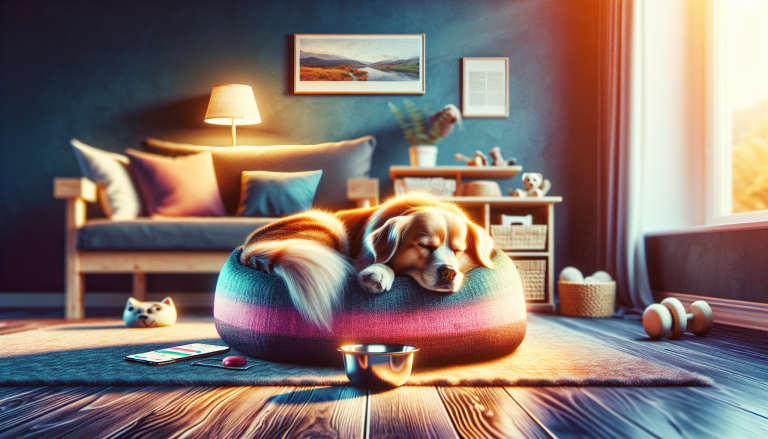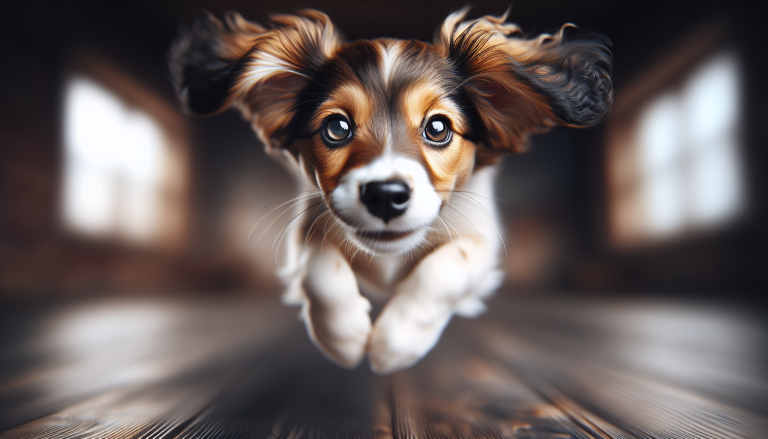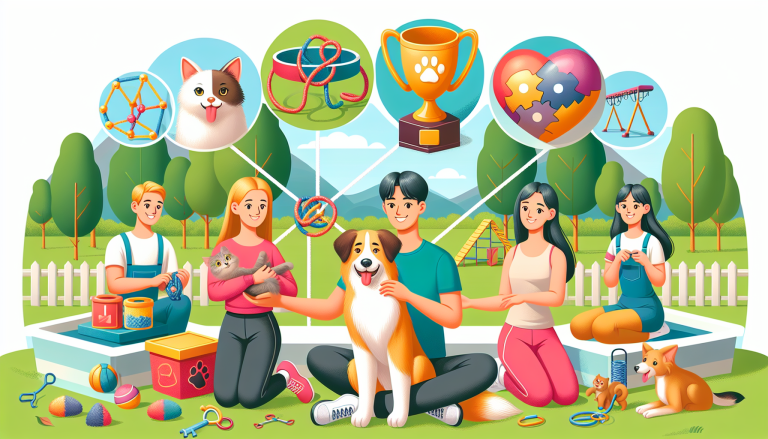You love your furry friend and want to make sure they feel comfortable and safe in your home. Creating a pet-friendly home environment is easier than you might think. By making a few simple adjustments, you can ensure that your pet has everything they need to thrive in their surroundings. From creating designated pet-friendly areas to choosing pet-friendly furniture, this article will guide you through the steps to create a welcoming and enjoyable home for your beloved pet.
Table of Contents
ToggleCreating a Pet-Friendly Home Environment
Having a pet in your home can bring immense joy and love to your life. However, it’s essential to create a safe and comfortable environment for your furry friend. From choosing the right flooring to managing pet hair and odor, there are several factors to consider when creating a pet-friendly home. In this article, we will explore various areas of the home and provide you with practical tips to ensure a pet-friendly living space for both you and your beloved companion.
Flooring Options
When it comes to flooring, it’s essential to choose materials that are durable and easy to clean. Hardwood or tile floors are excellent options as they can withstand scratches from your pet’s nails and are easy to sweep or mop. If you prefer the warmth and comfort of carpet, consider opting for a stain-resistant and easy-to-clean carpet specifically designed for households with pets. Additionally, placing rugs or mats in high-traffic areas can help protect your floors from scratches and spills.
Furniture and Upholstery
Pets love to snuggle up on furniture, so it’s crucial to select pet-friendly upholstery materials that are resistant to scratches, stains, and pet hair. Leather or faux leather furniture is a great choice as it is durable and easy to clean. If you prefer fabric upholstery, look for materials that are stain-resistant and machine washable. Additionally, using furniture covers can provide an extra layer of protection and make cleaning up fur and dirt a breeze.
Pet-Friendly Plants
Adding greenery to your home can create a calming and inviting atmosphere. However, it’s essential to choose pet-friendly plants that are non-toxic to your furry friends. Some popular pet-friendly plants include Boston ferns, spider plants, and African violets. On the other hand, plants such as lilies, aloe vera, and pothos can be toxic to pets. Ensure that any plants you bring into your home are safe for your pets to avoid any potential health issues.
Safety Measures
Creating a safe environment for your pet is of utmost importance. To prevent accidents or injuries, secure any loose wires or cords that may tempt your pet to chew on them. Use cord organizers to keep them hidden or wrap them in protective tubing. Additionally, ensure all electrical outlets are covered or fitted with safety plugs to prevent your curious pet from getting electrocuted. Finally, secure windows and balconies with screens or pet-friendly barriers to prevent any falls or accidents.
Managing Pet Hair and Odor
Pets naturally shed hair, and keeping your home free from pet hair and odor can be a challenge. However, with the right grooming routine and cleaning strategies, you can maintain a clean and fresh-smelling home.
Regular Grooming
Regular grooming is crucial for keeping your pet’s coat healthy and minimizing shedding. Brushing your pet daily not only helps remove loose fur but also prevents matting and tangles. Additionally, bathing your pet regularly using pet-friendly shampoos and conditioners can help reduce odor and keep their coat clean and shiny. Remember to trim your pet’s nails regularly to prevent scratches on your floors and furniture.
Choosing the Right Vacuum Cleaner
Investing in a high-quality vacuum cleaner specifically designed to tackle pet hair and dander is essential. Look for vacuums with strong suction power and specialized pet attachments, such as upholstery brushes and crevice tools. Additionally, consider a vacuum with a HEPA filter to effectively trap allergens and ensure clean indoor air quality. Regular vacuuming of floors, carpets, furniture, and curtains will help keep pet hair under control and minimize allergies.
Using Air Purifiers
Air purifiers can be a game-changer when it comes to eliminating pet odors and allergens from your home. Look for air purifiers with HEPA filters that can capture pet dander, dust, and other airborne particles effectively. Placing air purifiers in commonly used areas, such as the living room and bedroom, can help maintain fresher and cleaner air. Remember to clean or replace the filters regularly for optimal performance.
Odor Control Tips
To keep your home smelling fresh and clean, there are several simple yet effective tips you can follow. Firstly, regularly wash your pet’s bedding and any fabric items they frequently use, such as blankets or plush toys. Use pet-friendly detergents and additives designed to remove pet odors and stains. Secondly, make use of air fresheners or natural remedies like baking soda or vinegar to neutralize odors. Lastly, ensure proper ventilation by opening windows and using fans to circulate fresh air throughout your home.
Setting Up a Pet-Friendly Bedroom
Creating a pet-friendly bedroom is essential to ensure your furry friend has a comfortable space to relax and sleep.
Choosing Pet-Friendly Bedding
When choosing bedding for your pet’s sleeping area, opt for materials that are easy to clean and resistant to stains. Look for pet beds with removable and machine-washable covers. Additionally, consider waterproof mattress protectors to safeguard your own mattress from any accidents or spills. Providing your pet with their own designated bed promotes a sense of security and helps keep hair and dirt in one place.
Creating a Comfortable Sleeping Area
Designate a cozy corner or a specific area in your bedroom for your pet’s sleeping quarters. Consider placing a soft pet bed or a plush blanket in their chosen spot to ensure maximum comfort. To make the space more inviting, you can add some familiar scents, such as a worn shirt or a blanket with your scent, to help your pet feel secure and at ease.
Providing Access to Water and Litter Box
Ensure that your pet has easy access to fresh water at all times. Place a water bowl in your bedroom or nearby, making sure to refill it regularly. If your pet uses a litter box, place it in an easily accessible location that provides privacy. Remember to clean and scoop the litter box daily to maintain a clean and odor-free environment.
Pet-Friendly Living Room Ideas
The living room is often the heart of the home, and creating a pet-friendly space is key to ensuring your pet feels included and happy.
Stain-Resistant Furniture
Choosing furniture that is resistant to stains and easy to clean is crucial for a pet-friendly living room. Opt for materials such as leather or microfiber, as they are less likely to absorb stains and odors. Additionally, consider furniture with removable and machine-washable covers for added convenience. Using throws or blankets to protect your furniture can also help prolong its lifespan and make cleaning up pet hair a breeze.
Creating a Safe Space for Play
Designate a specific area in your living room for your pet’s playtime. This can be achieved by adding a pet-friendly rug or mat in a corner of the room. Place your pet’s toys, scratching posts, and interactive puzzles in this area to encourage play and mental stimulation. Ensuring there is enough space for your pet to move around freely and play safely is essential for their overall well-being.
Using Pet-Friendly Décor
When it comes to choosing décor for your living room, opt for pet-friendly options that are both stylish and practical. Avoid fragile or easily breakable items that could be knocked over by your pet. Instead, choose durable materials and furniture with rounded edges to prevent injuries. Incorporate pet-friendly elements such as wall-mounted shelves or perches for your cat or low-to-the-ground seating options for your dog. This will provide your pet with their own space while seamlessly blending with your overall décor.
Managing Pet Toys and Accessories
Keeping your pet’s toys and accessories organized and easily accessible is essential for a clutter-free and pet-friendly home.
Organization and Storage Solutions
Invest in storage solutions specifically designed for pet toys, such as baskets, bins, or toy boxes. Keep these containers in an easily accessible location, making it convenient for both you and your pet. Label each container to easily identify and locate specific toys or accessories. Consider incorporating storage solutions into your existing furniture, such as ottomans or benches with hidden compartments, to save space.
Choosing Durable Toys
When selecting toys for your pet, opt for durable options that can withstand rough play and chewing. Look for toys made from high-quality materials, such as rubber or nylon, that are designed to last. Avoid toys with small parts that can be easily swallowed or choked on. Regularly inspect your pet’s toys for any signs of wear and tear, and replace them as needed to prevent accidents or injuries.
Creating a Designated Pet Area
Designate a specific area in your home where your pet’s toys and accessories are stored. This can be a corner of the living room, a spare room, or even a mudroom. Add shelving, hooks, or hanging racks to keep leashes, collars, and grooming supplies organized. By designating a dedicated space, you can easily access your pet’s essentials while keeping your home tidy and clutter-free.
Pet-Friendly Kitchen and Dining Areas
The kitchen and dining areas are often busy spaces in the home, and ensuring they are pet-friendly is crucial for your pet’s safety and well-being.
Storing Food and Treats Properly
Store your pet’s food and treats in sealed containers to protect them from pests and maintain their freshness. This will also prevent your pet from accessing food outside of their designated mealtimes. Avoid leaving food or treats on countertops or open shelves as this can tempt your pet and potentially lead to accidents or ingestion of harmful substances.
Setting Up Safe Dining Areas for Pets
Designate a specific area in your kitchen or dining room for your pet’s food and water bowls. Place a non-slip mat or tray underneath to catch any spills or splashes. Ensure that the bowls are easily accessible for your pet and placed away from busy walkways to minimize the risk of tripping. If you have multiple pets, consider providing separate feeding areas to prevent any tensions or food aggression.
Keeping Countertops Clear of Hazards
Pets are naturally curious creatures and may attempt to jump onto countertops or tables to explore. Clear your countertops of any hazardous items, such as sharp utensils, toxic foods, or hot cookware. Store these items in locked cabinets or drawers to prevent your pet from accidentally knocking them over or ingesting something harmful. Keeping your countertops clear and uncluttered will also discourage your pet from jumping up and potentially injuring themselves.
Designing a Pet-Friendly Yard or Outdoor Space
If you have a yard or outdoor space, creating a pet-friendly environment is essential for your pet’s safety and enjoyment.
Creating a Secure Enclosure
Ensure that your yard is fully enclosed and secure to prevent your pet from wandering off or encountering any dangers. Inspect the perimeter for any gaps, loose boards, or holes that your pet could escape through. Add fences or gates to secure the area and keep out any unwanted visitors. Additionally, consider installing a pet-friendly gate or barrier to create a separate area for your pet to enjoy without the risk of venturing into unsafe areas.
Choosing Pet-Friendly Plants and Landscaping
Creating a lush and vibrant outdoor space for your pet to explore is fantastic, but it’s important to select pet-friendly plants and landscaping. Avoid plants that are toxic to pets, such as lilies, azaleas, or oleanders. Instead, opt for non-toxic plants like sunflowers, marigolds, or pet grass. Incorporate sturdy ground coverings or mulch to prevent wear and tear on your pet’s paws. Regularly remove any toxic or spiky plants from your yard to keep your pet safe.
Providing Shade and Water
Ensure that your pet has access to shade and fresh water when spending time outdoors. Place pet-friendly umbrellas, canopies, or a designated shaded area where your pet can take a break from the sun. This will help prevent overheating and keep them comfortable during hot weather. Provide a water source, such as a pet-friendly fountain or a shallow dish, that is readily available for your pet to stay hydrated while enjoying their outdoor time.
Pet-Friendly Home Cleaning Tips
Keeping your home clean and tidy when you have a pet requires some additional effort. Here are some pet-friendly cleaning tips to maintain a hygienic living environment.
Using Pet-Safe Cleaning Products
When selecting cleaning products, ensure that they are safe for use around pets. Avoid products that contain harsh chemicals or toxins that could be harmful if ingested or inhaled by your pet. Opt for pet-friendly cleaning solutions or natural alternatives like vinegar, baking soda, or lemon juice. Always read product labels and follow instructions carefully to ensure the safety of both you and your pet.
Removing Stains and Odors from Surfaces
Accidents happen, and with pets, it’s important to act quickly to clean up any stains or odors. Blot any liquid spills or messes with a clean cloth or paper towel to absorb as much as possible. Avoid using steam cleaners on carpets, as the heat can set stains. Instead, use pet-specific stain removers or a mixture of mild detergent and water for carpets and upholstery. For hard surfaces, consider using enzymatic cleaners that break down stains and odors effectively.
Regular Cleaning Routine
Establishing a regular cleaning routine is crucial for maintaining a clean and odor-free home. Vacuuming or sweeping floors, carpets, and furniture regularly is essential to remove pet hair and dander. Wipe down surfaces with pet-safe disinfectants to eliminate bacteria and prevent any potential health risks. Additionally, wash your pet’s bedding, blankets, and toys frequently to maintain cleanliness and freshness.
Ensuring a Pet-Safe Environment
Keeping your pet safe should be a top priority when creating a pet-friendly home. Here are some important measures to consider.
Pet-Proofing Electrical Cords and Outlets
Pets are naturally curious and may be tempted to chew on electrical cords or stick their paws into outlets. Ensure that all electrical cords are neatly organized and secured, making them less accessible to your pet. Use cord covers or PVC pipe to protect cords from potential chewing. Consider using outlet covers or cord protectors to prevent your pet from coming into contact with live wires or electrical outlets.
Securing Windows and Balconies
To prevent accidents or falls, ensure that windows and balconies are securely covered or protected. Use pet-friendly window screens or mesh barriers to prevent your pet from escaping or getting stuck. Ensure that your windows are not left open without proper safeguards, such as window locks or sturdy screens. For balconies, use pet-friendly enclosures or barriers to create a safe space for your pet to enjoy the outdoors without the risk of falling.
Avoiding Harmful Houseplants
Certain houseplants can be toxic to pets if ingested. It’s important to research and avoid plants that are known to be toxic to cats, dogs, or other pets. Common toxic plants include lilies, daffodils, peace lilies, and poinsettias. Opt for pet-friendly plants that are non-toxic, such as Boston ferns, spider plants, or succulents. Place plants out of your pet’s reach or use hanging planters to ensure that they are not accidentally ingested.
Creating a Routine for Exercise and Mental Stimulation
Regular exercise and mental stimulation are essential for your pet’s overall well-being. Here are some tips to create a routine that keeps your pet active and engaged.
Designating Play Areas
Create designated play areas for your pet both indoors and outdoors. These areas can be outfitted with toys, scratching posts, or interactive puzzles to encourage play and mental stimulation. Designing a play area with various heights, tunnels, or climbing structures provides your pet with opportunities to explore and exercise their natural instincts.
Daily Exercise and Enrichment Activities
Engage in daily exercise activities with your pet, such as walking, jogging, or playing fetch. Dedicate specific times during the day for interactive play sessions to keep your pet physically active and mentally stimulated. Consider enrolling your pet in agility training or obedience classes to provide structured exercise and mental challenges.
Using Interactive Toys and Puzzles
Interactive toys and puzzles are a great way to keep your pet entertained and mentally engaged. Treat-dispensing toys or puzzle feeders can provide mental stimulation during mealtime. Puzzle toys that require your pet to work for treats or rewards can keep them occupied and provide enrichment. Rotate toys regularly to keep your pet excited and engaged with new challenges.
In conclusion, creating a pet-friendly home environment requires careful consideration of various factors, from choosing the right flooring and furniture to implementing safety measures. Taking steps to manage pet hair and odor, creating designated spaces for sleep and play, and implementing cleaning routines are crucial for a harmonious living space with your beloved pet. By ensuring a pet-safe environment and incorporating regular exercise and mental stimulation, you can provide your furry friend with a happy, healthy, and fulfilling life.
